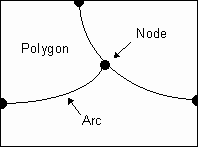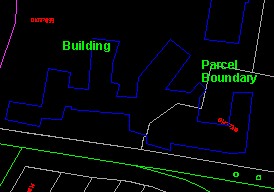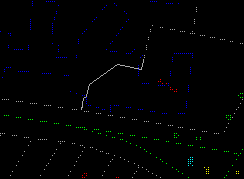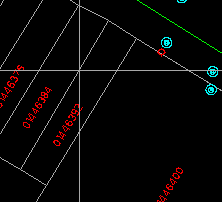![]()
Geometrical relationships change with the coordinate system. Distance is one of these relationships. We have seen earlier that using a flat map and using an ellipsoidal earth to measure the distance between two points could yield different results.
Topological relationships are not affected by the coordinate system. The fact that a school is on an island would not change whether you are looking at a flat map or an ellipsoidal earth.
In a GIS, there are two ways of handling relationships. One way is to derive them on-the-fly when requested by the user. This is the approach used when we invoke the distance calculation command to compute the distance between two arbitrary points.
Another way to handle a relationship is to derive the relationships ahead of time, store them in the database, and retrieve them when required. This approach is suitable for relationships that take considerable time to derive and are relatively static. Topological relationships are ideal candidates because their derivations require fairly intensive calculations, and once derived would remain valid until the next update to the geometric data. It is common practice, therefore, to pre-derive the basic topological relationships and store them in the database. In essence, this approach trades storage for response time.
Three basic topological relationships are usually stored: connectivity, adjacency, and enclosure. Connectivity describes how lines are connected to each other to form a network. Adjacency describes whether two areas are next to each other, and enclosure describes whether two areas are nested.
To help derive topological relationships, we impose a restriction on lines which is to not cross each other. We sometimes call lines that observe this restriction and that are topologically related arcs. This is not to be confused with circular arcs.
Arcs terminate at nodes, and therefore each arc joins two nodes. The arcs in turn form the outlines of polygons. The nodes, arcs, and polygons form a hierarchy of topological elements upon which topological structures are built.

In the map below, the parcel boundaries are arcs and they meet at the nodes. The boundaries in turn form closed outlines of the parcels.

Features that are broken down into arcs, nodes, and polygons that are related to each other topologically in the database form a topological layer. A database could contain one or more topological layers.
Which lines are arcs and which features make up a topological layer are decisions made by the project manager or the database designer. In this database parcel boundaries and their parcel identification codes are grouped into one topological layer. Hence the parcel boundaries are arcs that stop at intersections.
The buildings and the parcels, however, do not form a topological layer.

(288172, 740511), 1:800
Hence the boundaries do not stop at the outlines of the building.

For the same reason, the building's outlines do not stop at the parcel boundaries.

Because the two kinds of features are not in the same topological layer, the database does not store their topological relationships. The GIS therefore does not have information about which buildings are contained in which parcel.
![]() Display
information on arcs.
Display
information on arcs.
We have done this in a previous chapter. Use the Information icon ![]() on
the CARIS panel to display system-defined information for this line.
on
the CARIS panel to display system-defined information for this line.

(288658, 740417), 1:400
The information for this line shows that it belongs to theme 50, it is an arc, and it borders on two parcels with identification codes 01446392 and 01446384 respectively. From this, we can tell which two parcels are neighbours, and with some processing, we can also determine all neighbours of a given parcel.

The identification code of the polygons on two sides of an arc are some of the explicit topological information stored in this database. This information is derived automatically by the GIS. The process of deriving topology is called topology building and it is performed by a special module in the GIS not included in this customized version. However, topological relationships were derived and stored in this database to support our analysis
![]()